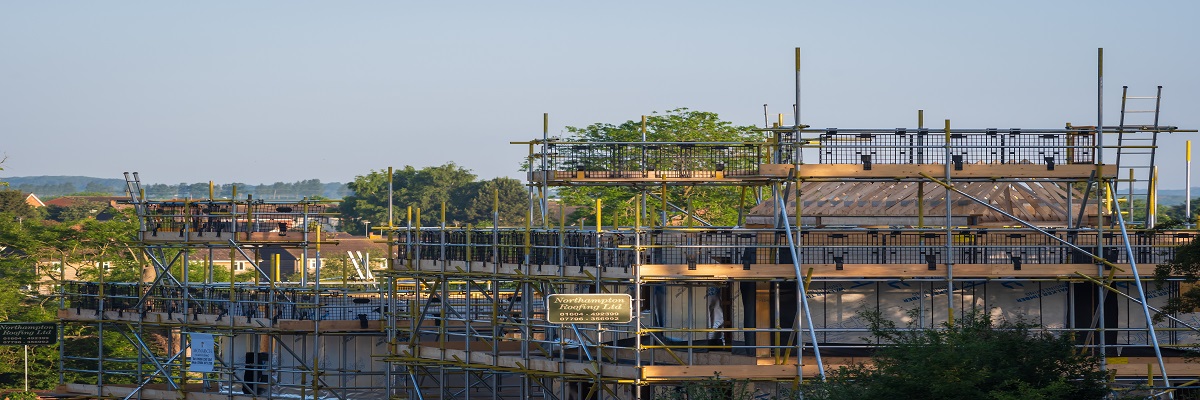Land Business Update | Week Commencing 19 August 2024
Farming
Further updates to the Sustainable Farming Incentive
Defra updated the guidance for the SFI in early August. The main changes are:
- Some changes to the guidance on how to manage land under some of the actions. For example, legume fallow is now a rotational option again, which provides much more flexibility than the static option it was going to be.
- New voluntary advice for each SFI action, with examples and guidance on best practice. This approach continues with Defra’s theme of making the SFI more flexible than previous schemes.
- New agroforestry items, including planting an agroforestry woodland tree (£5.40 per tree) or fruit tree (£17.83 per tree) and completing an Agroforestry Plan to plan and create an agroforestry system (£1,268.08 per plan). This is in addition to the existing annual revenue payment for maintaining low density (30-50 trees/ha) in-field agroforestry (£248/ha for 3 years).
- Updated SFI terms and conditions, allowing participants to access more actions and include additional land by entering into a second agreement.
There are now 105 capital items and 5 plans available. S&P comment: we now know that it will not be possible to add new actions to an existing SFI agreement, as originally thought. New actions will have to be subject to a new, separate agreement, which will be frustrating for land managers that went into the scheme early thinking they could add to it later. Having a second, or third, agreement is possible but makes administration more complicated. Please contact Jonty Armitage or Alice Johnson if you would like to discuss the scheme.
Hedgerow Management Rules – cutting and trimming exemptions
There is a new simplified process for exemptions for cutting and trimming a hedgerow when sowing oilseed rape or temporary grass in August. Land managers now only need to notify RPA of their intention to cut or trim under these circumstances. They should include: details of the crop to be sown; land parcel numbers; and head their correspondence ‘Hedgerow management cutting and trimming rules notification’. Land managers do not need to wait for written permission before carrying out the work. Anyone who has already submitted a request to the RPA to cut or trim in August can take the RPA acknowledgement of the request as meeting the notification requirement.
EU grain harvest expected to be marginally lower than in 2023
The harvest is expected to be 4 million tonnes or 1.4% lower, according to USDA analysis released on 5 August. It is due to a smaller area planted and lower yields for all grains except barley and oats. Overall, EU grain stocks, after consumption, imports and exports are taken into account, are expected to fall.
Farmers should get government help to cut methane emissions
Including an additive that suppress methane emissions to the feed of a third of English dairy cows could reduce methane emissions by @ 16,000 tonnes a year, which is around 1% of UK-wide methane emissions, according to the Green Alliance. In carbon dioxide equivalent measures, it is @ 500,000 tonnes of CO2, so a significant amount. The Green Alliance says it would cost @ 0.5 pence per pint of milk produced, so adding @ 1% to the cost. If paid for by government – rather than the industry or consumers – a subsidy would cost around £25m a year to support 30% of English dairy farms.
Dutch scheme to voluntarily close livestock farms to improve the environment
This is included to show what other countries are doing. The €700m scheme has been approved by the EU for The Netherlands. The scheme covers up to 100% of eligible costs, including compensation for the loss of production rights and costs linked to the site closure. It is being targeted at sites on peat, sand, and near streams and Natura 2000 areas. It will also fund advice on sustainable livestock systems.
Rural economy and property
What the National Planning Policy Framework reforms could mean for land managers
The government is consulting on changes to the NPPF until 24 September. The NPPF sets out the main planning policies for England and how they are expected to be applied at a local level. The focus of the proposals is on boosting the national supply of housing and other development needs. Several of the changes reverse amendments to the NPPF which were introduced by the previous government in December 2023. The changes have implications for rural landowners:
- They emphasise that local authorities need to identify more land which can be released for housing and other uses, with many councils having to update their Local Plans to reflect the revised NPPF when adopted. Land owners with land near towns and villages may also be approached by developers.
- The presumption in favour of development will be strengthened and there will be, in effect, a new ‘sequential test’ for local authorities when preparing and maintaining their Local Plans. They should give first consideration to development on previously developed land (brownfield) in sustainable locations, then consider grey belt land in sustainable locations which is not already previously developed, and only then consider other green belt locations.
- The definition of brownfield land may be altered to include hardstanding and glasshouses, which would be a significant change.
- Increase the size threshold for renewable projects to allow more solar and wind farms (see article below).
- Local authorities will be expected to actively “identify suitable areas for renewable and low carbon energy sources, and supporting infrastructure, where this would help secure their development”. This is much more pro-active than the previous wording which was to “consider identifying.” Further, the NPPF says decision makers should give “significant weight” to a proposal’s contribution to renewable energy generation and a net zero future.
- There are also changes to development of commercial property and design codes.
There is more detail in our blog on the changes and please contact Caroline McDade, our national head of planning, if you would like to discuss them or any sites.
Labour proposing to increase size threshold for renewable projects to allow more solar and wind farms
Renewable energy projects have to go through an enhanced planning process – as they are considered ‘nationally significant’- if they are above a certain size. The thresholds are proposed to increase to 100MW for wind (so double the current level and enough to power 120,000 homes) and to 150MW for solar (trebled and @ 45,000 homes).
Housing rent affordability reaches lowest level for at least seven years
The rents payable on new tenancies is now equivalent to 28.8% of renters’ gross income, up by 2.2% over the past year. This is the highest level since data started to be collected on this in 2017. The data was published by the Office for National Statistics, which defines rent as unaffordable if it accounts for more than 30% of income.
Government announces start of ‘renewed push’ to reach full gigabit coverage by 2030
The government has announced further support for the Project Gigabit programme, which aims to achieve gigabit speed broadband coverage across Great Britain by 2030. The announcement includes up to £800m of government investment to provide faster broadband to @ 312,000 homes and businesses. It is being particularly targeted at regions that have been neglected in previous rollouts, including Wales which is included for the first time. The Rural Services Network has cautiously welcomed the announcement but is monitoring the rollout in the most remote areas.






